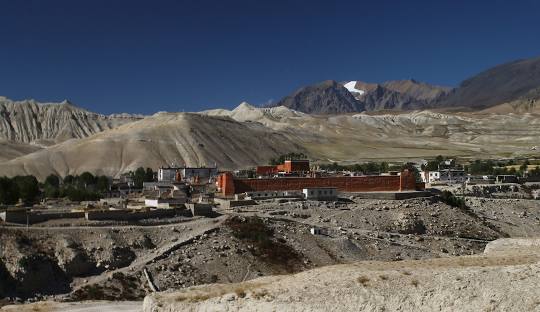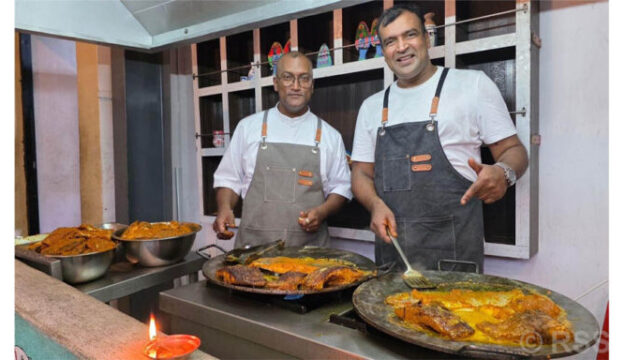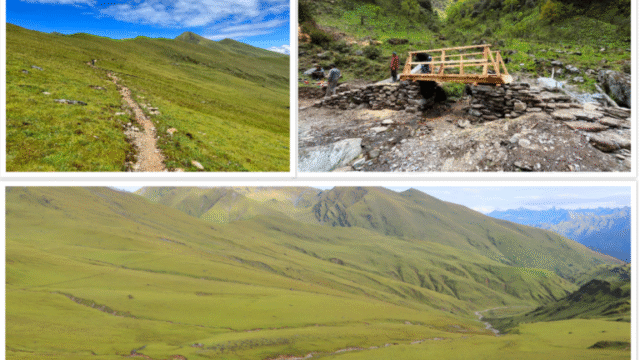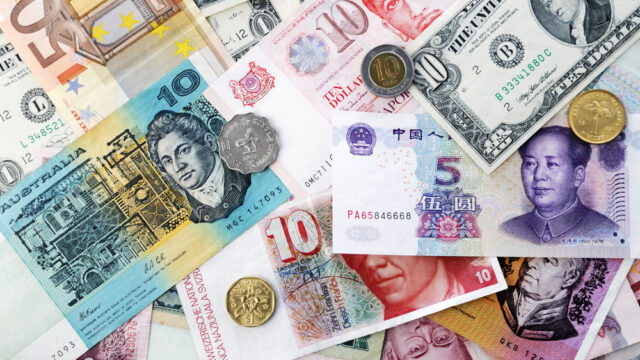The Myagdi headquarters, Lomanthang in Mustang, is roughly 180 kilometers north of Beni. It is rich in natural beauty and tourism potential in addition to having historical and religious significance. Local officials lament that restrictive policies have restricted the number of foreign visitors despite the region’s enormous tourism potential.
Lomanthang: A Gem Of Mustang
Very few visitors reach Lomanthang, which is located roughly 75 kilometers north of Jomsom, despite the fact that thousands of people travel each year to neighboring locations like Marpha, Jomsom, Kagbeni, and Muktinath. The chairperson of the Lomanthang Rural Municipality, Tasi Nurbu Gurung, claims that the region’s tourism development has been hampered by stringent laws governing foreign visitors.
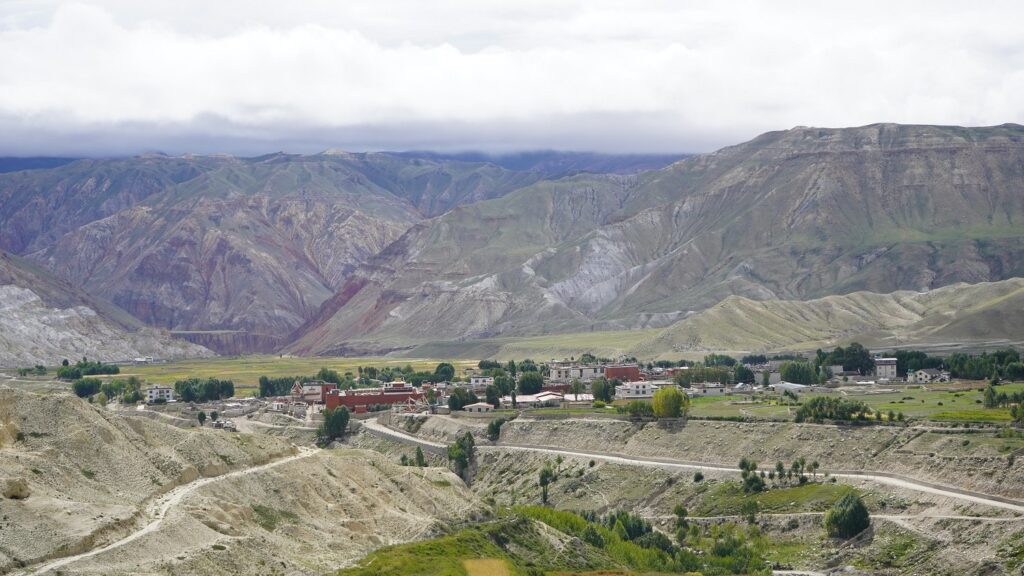
“The 10-day permit fee for foreign visitors to Lomanthang and Lo Ghekar Damodar Kunda is USD 500, which has restricted the number of visitors,” Gurung said. He thinks that thousands of tourists could come each year with government assistance, improving local economies.
An immigration office is located at the Korala border point in Lomanthang, which is adjacent to China. The office is still not operational, though. Home Minister Ramesh Lekhak officially opened the Armed Police Force and immigration buildings in November, but the office is still not operational because necessary facilities for food and animal quarantine are not available.
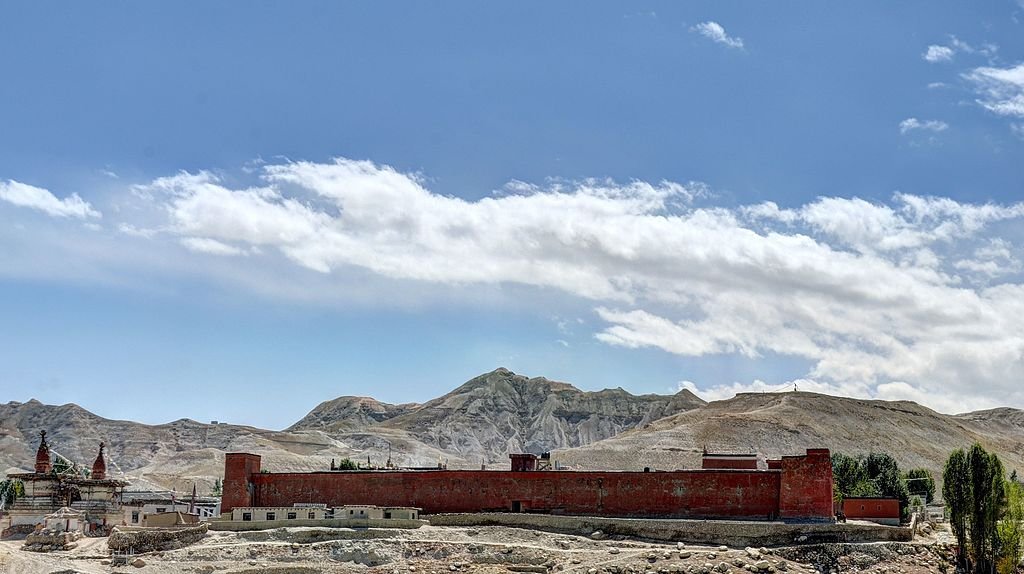
From the fifteenth to the twentieth centuries, Lomanthang was a vital trade route connecting Tibet, Nepal, and India. Locals, however, struggle because of trade restrictions, and the route is now all but abandoned. Gurung also draws attention to issues with medical emergencies, where obtaining permission from the Home Ministry to use a helicopter for rescue frequently results in delays.
There are roughly 2,000 people living in the five wards of the rural municipality. Rich in natural and cultural heritage, the 600-year-old settlement is tucked away in arid mountainous terrain and encircled by mud walls. Its distinct identity is defined by its palaces, monasteries, customs of the local kings, and Tibetan-influenced way of life.
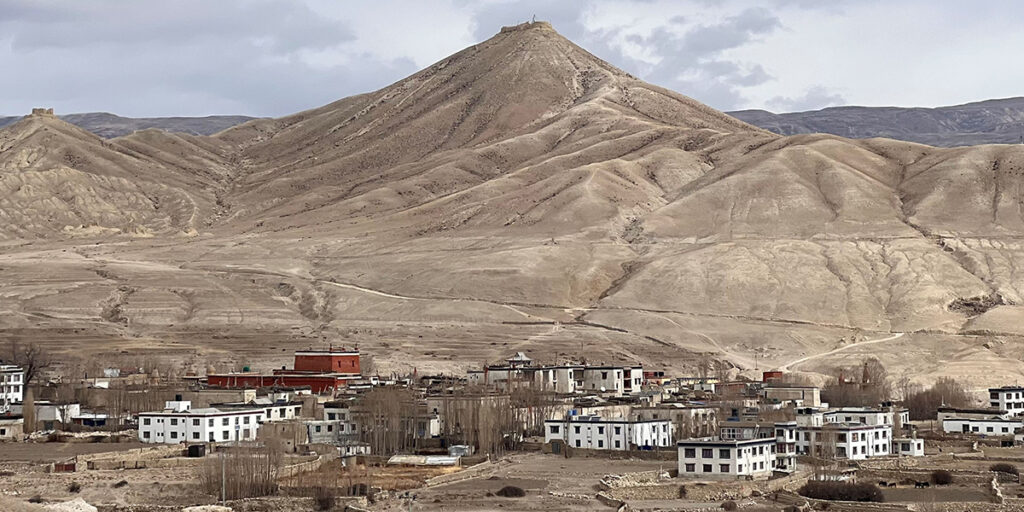
Lomanthang, the entry point to Upper Mustang, is 3,850 meters above sea level. The 2,000-year-old “Shija Jhong” cave complex, which has about 60 rooms, is located there. “Every visitor wants to explore this historical site,” Gurung says. Founded in the 13th century between the Annapurna and Dhaulagiri mountain ranges, the area was formerly the capital of the Lo Kingdom.
Lomanthang kept its monarchical system in place until the republic’s founding, even after Nepal was united in the 18th century. The last king Jigme Palbar Bista’s palace is still a popular tourist destination. An important hub of Buddhist and Tibetan culture is Lomanthang. This rich history is reflected in its palaces, monasteries, and historic artwork. This location offers stunning views of the Annapurna, Dhaulagiri, and Nilgiri. Visitors with an interest in culture and history are drawn to its royal monasteries, historic sculptures, murals, and Buddhist texts.
